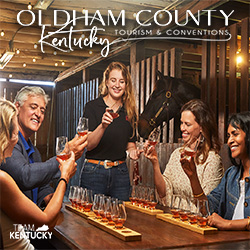Bratislava
Our guide in Bratislava was young and enthusiastic about the changes democracy has brought to his country. This city, the capital of Slovakia, which separated from the Czech Republic amicably in 1993, still has a somewhat Soviet-era feel to it, but with each passing year, less of that remains.
“Our president today is very popular,” he said. “Andrej Kiska is our first who was not a member of the Communist party. He learned business practices in Philadelphia and came back to build successful businesses. His American dream came true in Slovakia.”
The city has a wonderful Old Town that is car-free. Its town square offers cafes and restaurants that illustrate the city’s evolution.
“Bratislava is a very young city,” said our guide, “filled with universities and students. The average age here is 37. Under Communism, people went to work but didn’t work. There was no competition, no motivation. Now most people change jobs every three years.”
“I’ve been impressed with how Prague, Bratislava and others have recovered from the destruction and exploitation of the Communist regime,” Lloyd Hagen said. Hagen is retired from the former U.S. Information Agency and worked overseas in the 1970s. “People here adapt to change more quickly than we do because of their history,” he said.
Budapest
“Budapest surprises people.”
I knew our guide was right because several passengers had told me they knew nothing about it. Since it was locked away for so many years under Soviet rule, this dazzling city was a blank piece of paper for many on our ship.
“We are very similar to Prague and Vienna in our architecture and pace,” she said.
From the river, though, Budapest is more visually dynamic than either. Both sides of the river — Buda is built on hills and Pest is flat — have dozens of impressive structures from across all eras of European design.
“Hungarian is a beautiful language but is only spoken by 12 [million] to 15 million people, so it’s not very useful,” our guide said at Heroes’ Square. This prominent public venue celebrates Hungary’s history with powerful statues depicting both rulers and virtues, all beneath the gaze of Gabriel the Archangel, who stands atop its Millennium Column.
Later, she clued us in to a local custom — or lack thereof.
“In Hungary, we don’t click our glasses when we have a beer. The Turks did that when they executed 12 of our kings centuries ago.”
Just as the Charles Bridge was the ancient pathway to Prague Castle, the Chain Bridge served the same purpose for Buda Castle in Budapest. Buda Castle dates to the Middle Ages, and parts have been destroyed and rebuilt numerous times. One outstanding feature that has stood over the years is its Great Rondella, a bastion built in the 16th century on the castle’s southern side.
Castle Hill is a UNESCO World Heritage Site and makes for a great half day in Budapest. Its cobblestone streets offer lots in the way of cafes and diversions. A funicular sits just above the Chain Bridge that takes visitors up to the castle district and back.
On our day of departure, I compared notes with a reader of ours.
“The guides along the way have been outstanding,” said Mike Nieland of Blue Marble Journeys in Ankeny, Iowa. “This was my first river cruise. How convenient it is. We have lots of time in ports of call. The food on the ship is delicious, and there’s plenty of it. And I really like the way we all got to know each other. This is a great way to see Europe.”









